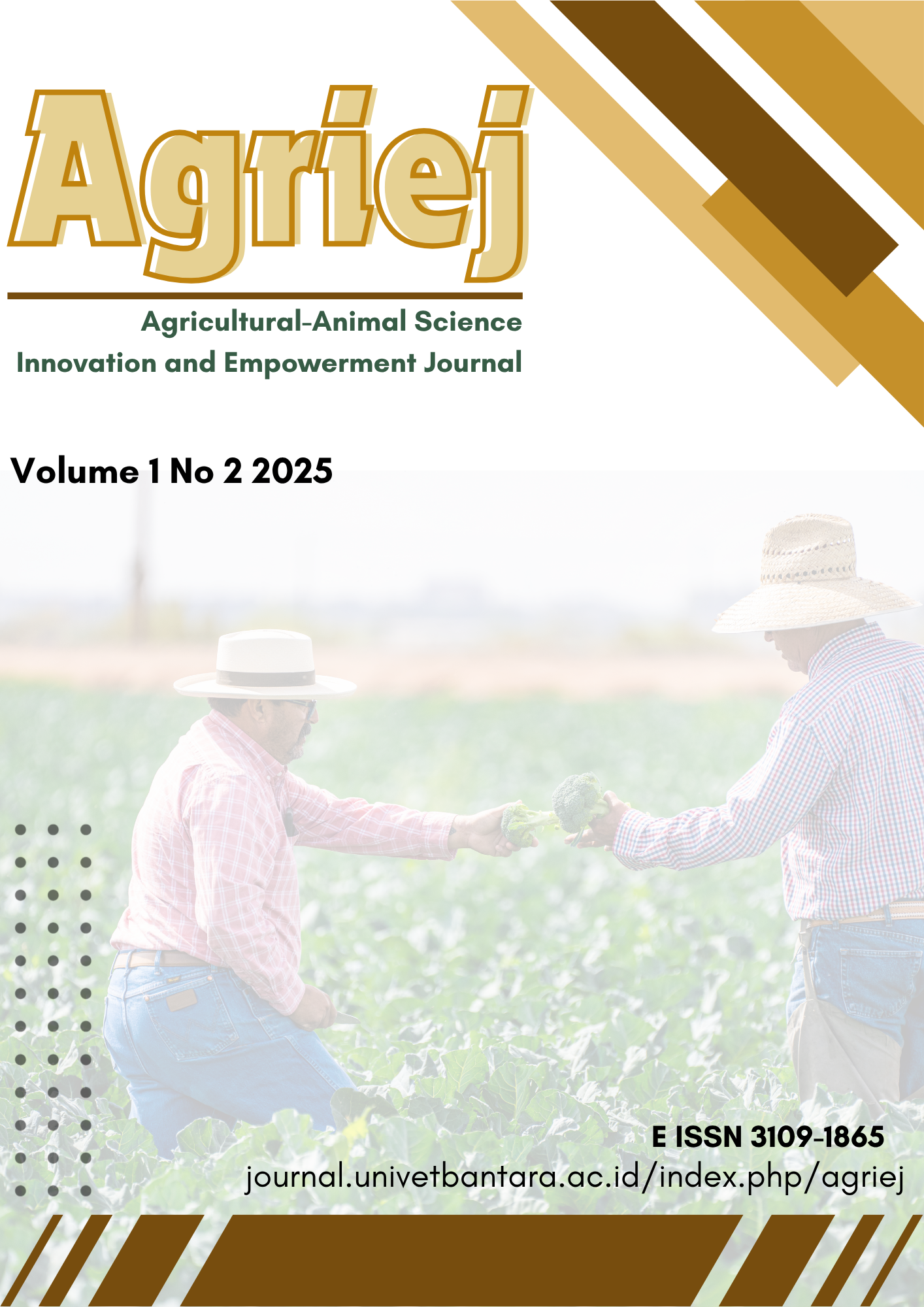Pemberdayaan Ibu-Ibu PKK Melalui Pelatihan Pembuatan Sirup Buah Bogem (Sonneratia alba) Sebagai Produk Unggulan Lokal Kecamatan Bunguran Timur Laut, Kabupaten Natuna
DOI:
https://doi.org/10.32585/agriej.v1i2.6993Abstrak
Natuna Regency holds significant potential in biological resources, including the presence of endemic mangrove species such as Sonneratia sp. (bogem), which are abundant along its coastal areas. However, the utilization of bogem fruit remains limited, particularly as an economically valuable processed product. This community service activity aims to empower members of the Family Welfare Movement (PKK) in Bunguran Timur Laut District through training in the production of bogem fruit syrup. The methods employed include Rapid Rural Appraisal (RRA) and Participatory Rural Appraisal (PRA), using educational, participatory, and sustainable approaches. The training results showed increased knowledge and skills among participants in processing bogem fruit into hygienic and marketable syrup. The resulting syrup product contains high levels of vitamin C and has a distinct sweet-sour taste, making it a promising functional beverage and a potential regional souvenir from Natuna. This activity not only supports local food preservation and sustainable use of natural resources but also creates opportunities for household-based creative economic development. Consequently, bogem syrup has the potential to become a flagship local product that strengthens regional identity and promotes economic independence in border communities.





